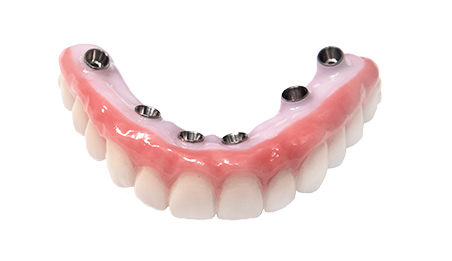Some Of Dental Sense
Table of ContentsTop Guidelines Of Dental SenseA Biased View of Dental SenseThe Ultimate Guide To Dental SenseDental Sense Things To Know Before You Get This
are medical devices surgically dental implanted into the jaw to restore an individual's ability to chew or their look. They offer assistance for synthetic (phony) teeth, such as crowns, bridges, or dentures. When a tooth is lost due to injury or disease, an individual can experience issues such as rapid bone loss, malfunctioning speech, or changes to chewing patterns that lead to discomfort.Dental dental implant systems include an oral implant body and oral implant abutment and may likewise consist of an abutment addiction screw. Cosmetic dentistry services. The dental implant body is surgically put in the jawbone instead of the tooth's root. The dental implant joint is generally connected to the dental implant body by the abutment fixation screw and extends via periodontals right into the mouth to sustain the affixed artificial teeth
(https://www.openstreetmap.org/user/dentalsense1)Framework of The Oral Implant System selecting oral implants, speak to your dental supplier about the possible advantages and threats, and whether you are a prospect for the treatment. Points to think about: Your total health and wellness is an important aspect in determining whether you are an excellent prospect for oral implants, for how long it will require to recover, and the length of time the implant may stay in location.
Smoking cigarettes may influence the healing procedure and decrease the long-lasting success of the dental implant. The healing process for the implant body might take numerous months or longer, throughout which time you typically have a temporary joint in location of the tooth. the oral implant procedure: Carefully follow the dental hygiene instructions offered to you by your dental copyright.
Not known Facts About Dental Sense
Implant failing can result in the demand for another procedure to fix or replace the implant system. Restores the capacity to chew Recovers aesthetic look Helps maintain the jawbone from diminishing because of bone loss Preserves the health and wellness of the bordering bone and gum tissues Aids maintain surrounding (close-by) teeth stable Enhances lifestyle Damage to bordering all-natural teeth throughout implant positioning Injury to the surrounding cells throughout surgical treatment, such as sinus perforation Injury during surgical procedure (for instance, crack of surrounding jawbone) Inadequate function, such as seeming like the teeth do not attack with each other normally A sensation that the tooth is loose or twisting in position arising from a joint screw loosening Implant body failure (looseness of the dental implant body) due to systemic infection, which might be a lot more most likely in people with uncontrolled diabetics issues due to local infection in bone and gums supporting the dental implant body because of postponed healing, which may be a lot more likely in individuals who smoke Problem cleaning up the gums around the dental implant, leading to bad dental hygiene Without treatment gum illness Post-surgical numbness due to nerve impingement or damages Constantly notify health and wellness treatment companies and imaging professionals that you have oral implants before any kind of magnetic vibration imaging (MRI) or x-ray treatments.
FDA is not familiar with any type of damaging events reported for MRI or x-ray procedures with oral implants. Dental implants systems are typically made of materials that adhere to global agreement requirements of the International Organization for Standardization (ISO) or ASTM International. These requirements have information of what makes a safe material.

A dental implant is a structure that replaces a missing out on tooth. With screw-like devices, the cosmetic surgeon inserts a dental implant into the jawbone, and it acts as an anchor for a synthetic tooth, called a crown.
Little Known Facts About Dental Sense.
Some individuals are not eligible for oral implant surgical treatment. It is for oral cosmetic surgeons to operate people with: intense illnessuncontrollable metabolic diseasebone or soft cells illness or infectionIf these issues are settled, a person can have the surgical procedure. In, oral specialists refrain from running on people with: If people with any one of the above undergo dental implant surgery, there is a higher threat of the dental implant stopping working.

Dental dental implant surgical treatment is a tailored procedure. Offer you time to heal. Connect the post and final crown, bridge or denture.
Next off, your specialist will thoroughly place the oral implant into your jaw. Finally, your specialist will certainly reposition your periodontals and shut the incision with stitches. If your implant is near the front of your mouth, your dental practitioner will make a temporary tooth for you to wear until you recover. This way, you will not have a gap in your smile while he said you recuperate.
Excitement About Dental Sense
Your copyright can inform you what to anticipate in your scenario. During the healing phase, your jawbone needs to fuse to the oral implant. This procedure, called osseointegration, is vital for stability and lasting success. This process can take anywhere from 3 to 9 months. In some instances, it might take longer.
Once your dental implant heals, your dentist can affix the abutment (little connector blog post) and your last reconstruction (crown, bridge or denture). This normally takes about one hour to complete and might call for a second small surgical procedure. You shouldn't really feel any discomfort during your dental implant treatment since your company will use medication to numb your gums.